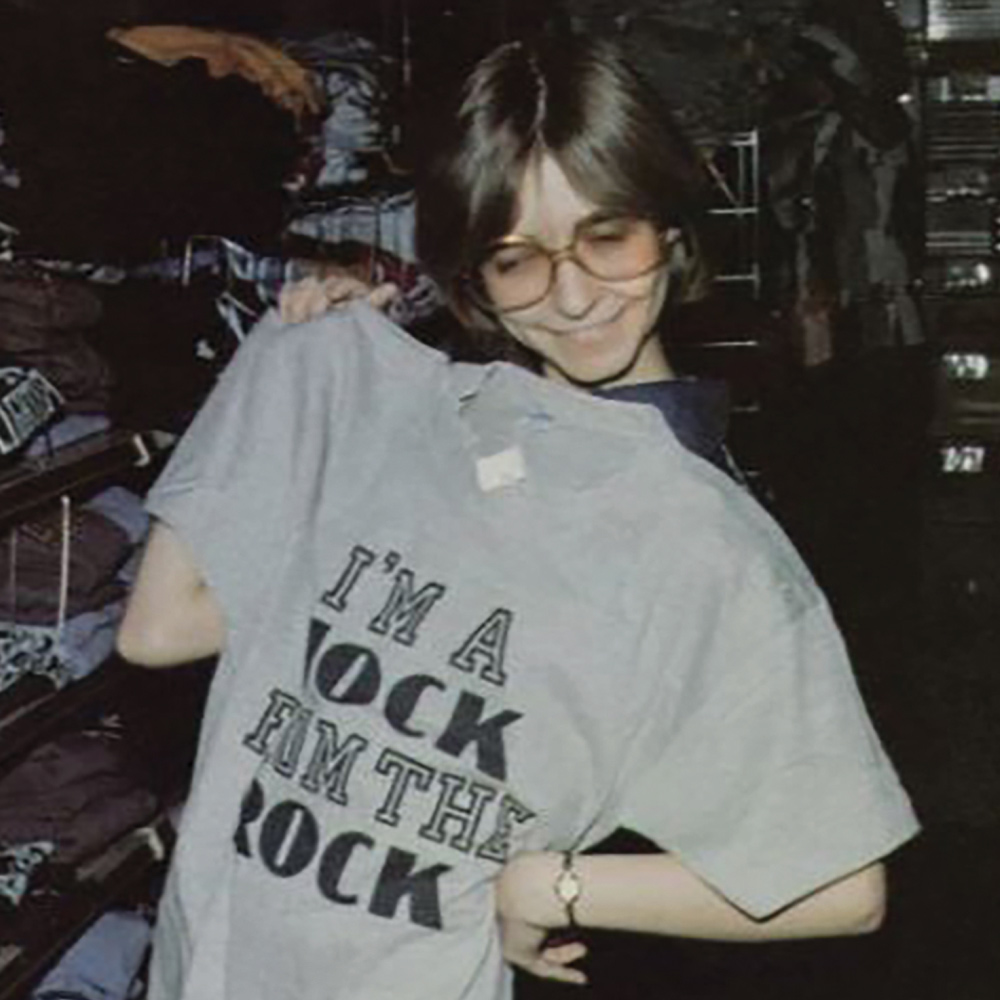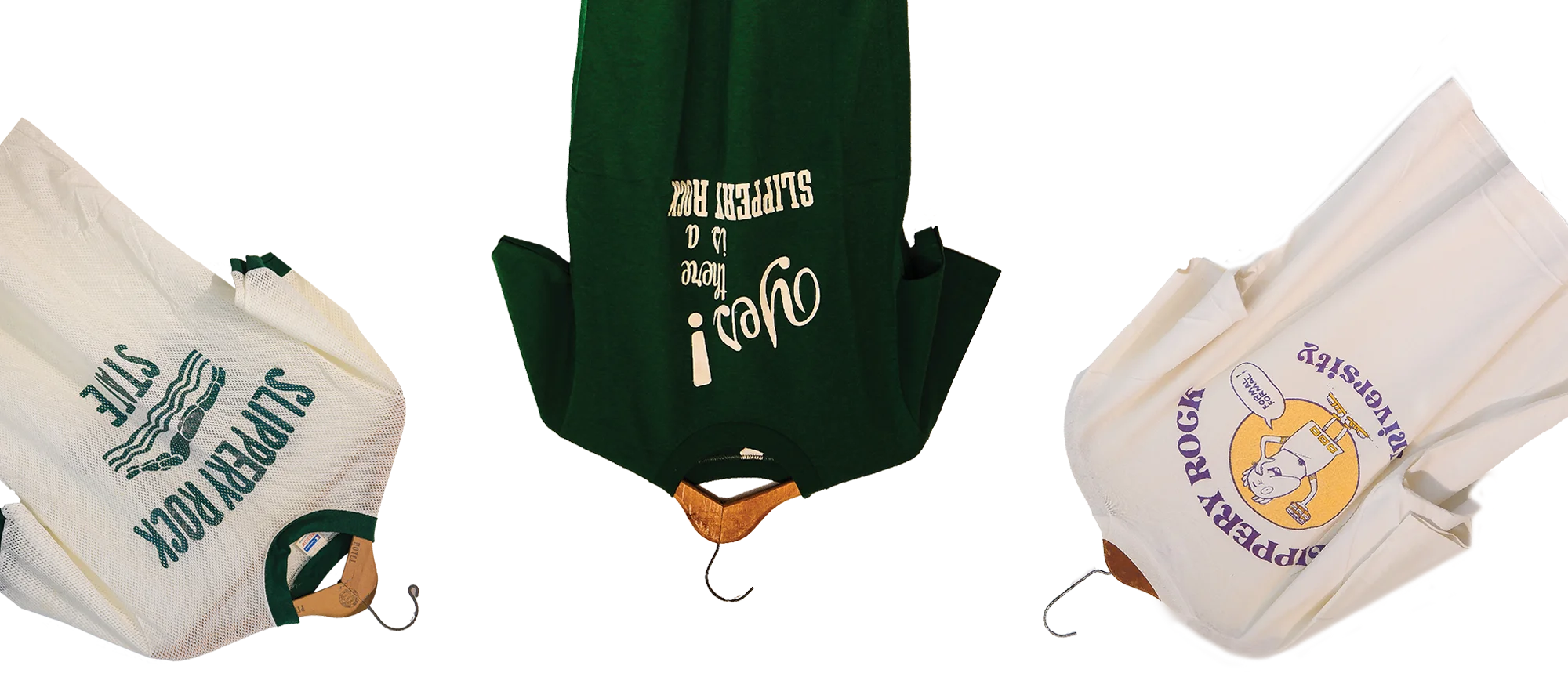
Common Thread


But Fry graduated in 2023, not long after taking up a hobby as a vintage clothing collector, and he has developed an appreciation for SRU apparel from bygone eras.
“It started when I decided to come to Slippery Rock and I needed some stuff to wear to class, and then it slowly turned into an obsession with the history of the university with clothing,” said Fry, a Pittsburgh native who earned his degree in finance. “I just kept going down the rabbit hole and I haven’t really come back.”
As a vintage clothing collector, Fry is most interested in Western and work wear, such as denim jeans and jackets, but when it comes to SRU items, the object of his affection is “cage gear.” This term refers to clothing issued by a school’s athletic or physical education department for classes, practices and other activities before it is returned and secured in the equipment room, often known as the cage.
As a former teachers college whose academic focus –– as determined by the state and by reputation –– was health and physical education, SRU produced a lot of cage gear for its students. After all, that’s what most of them wore to class, and some of them didn’t return the clothing and were forced to pay a nominal fee. To them it was like purchasing quality Slippery Rock gear at a discount.
Karen Perry, ’79, ’80M, was a distance runner in the late 1970s who needed a heavy sweatshirt for the winter, so Millie Haag, the equipment manager, issued her a double-layered hoodie from the cage dated 1962. Even back then, people would say, “They don’t make ’em like this anymore.”
Once she wore the gray sweatshirt, with SLIPPERY ROCK STATE green lettered arched over an “M” for medium, Perry knew she would just pay the $5 to keep it at the end of the semester.

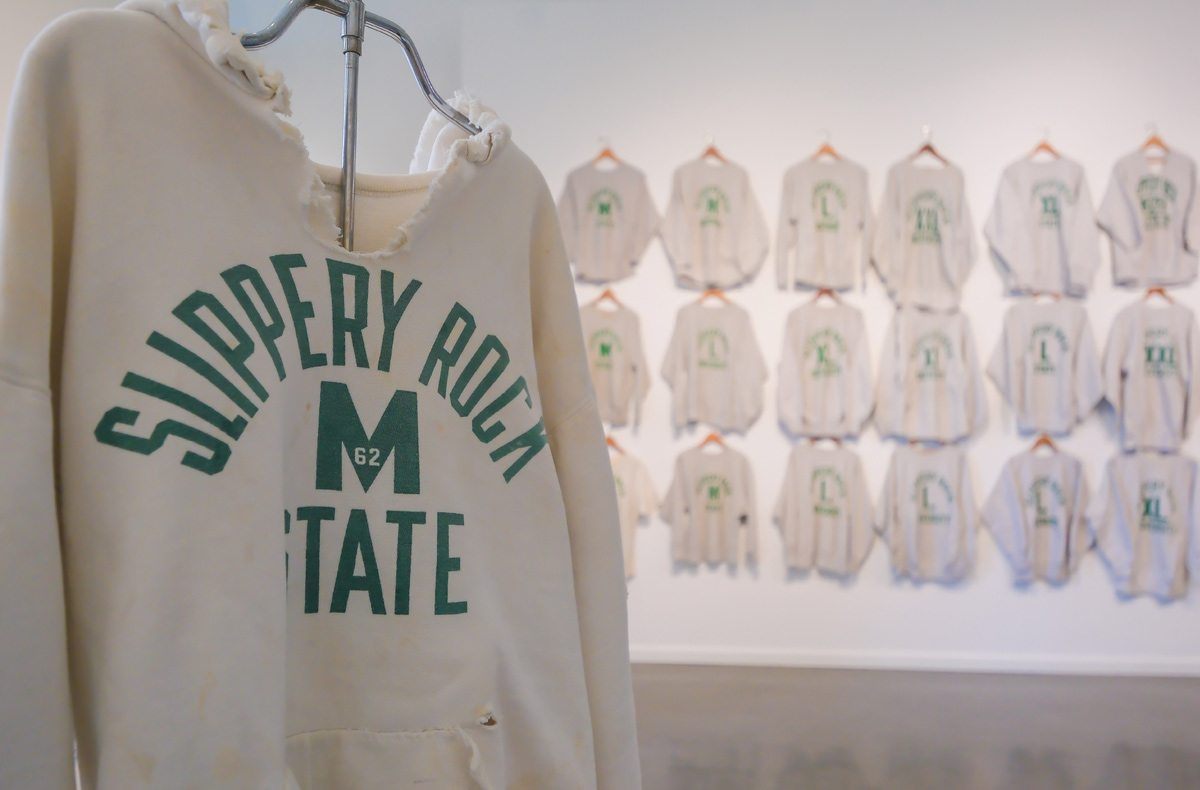
Fry happened to be planning a display of his vintage SRU clothing for the University’s Alumni Weekend, June 7-8, when someone suggested that he reach out to Perry.
“I took a couple of pictures of what I had and I sent him the sweatshirt, and he just about crawled through the phone wanting to meet me and see it in person,” Perry said. “I knew it was something I valued, but I didn’t know to what extent collectors would like it. He’s very passionate and very knowledgeable about the vintage clothing.”
Perry loaned Fry the 1962 cage sweatshirt that became the centerpiece of the collection that was on display in the Martha Gault Art Gallery during Alumni Weekend.
“For me, it was the holy grail,” Fry said. “This one’s interesting because it’s very thick and the ribbing for the neck is still there. It was made as a crewneck and the company put a hood and pocket on it. Every brand had a different design for the hoodie. This is a Champion, which is one of the first companies to make the cotton sweatshirt, and this Champion hoodie, this style specifically, is something that’s very desirable to a lot of collectors.”
Perry’s sweatshirt was one of more than 30 gray cage sweatshirts at Fry’s exhibit, ranging from 1962 to the early ’80s, but there were other relics of SRU’s past, depicting defunct names (Slippery Rock State College) or logos and mascots (the original Rocky the Rock). There were also motifs and cultural depictions on shirts promoting events, such as co-licensed shirts with cartoon characters like Ziggy or The Flintstones, or a homecoming shirt with a Grateful Dead theme.
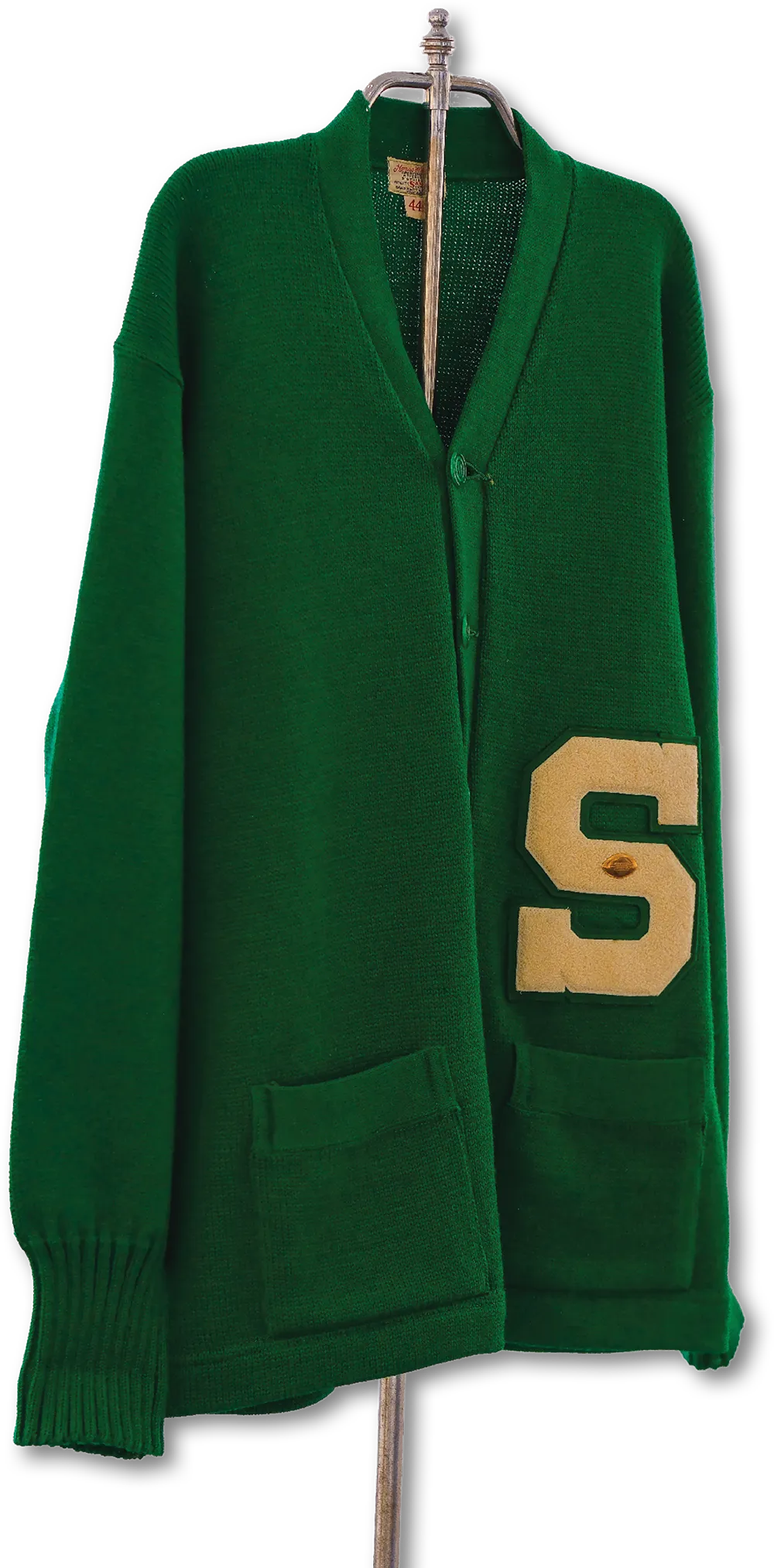


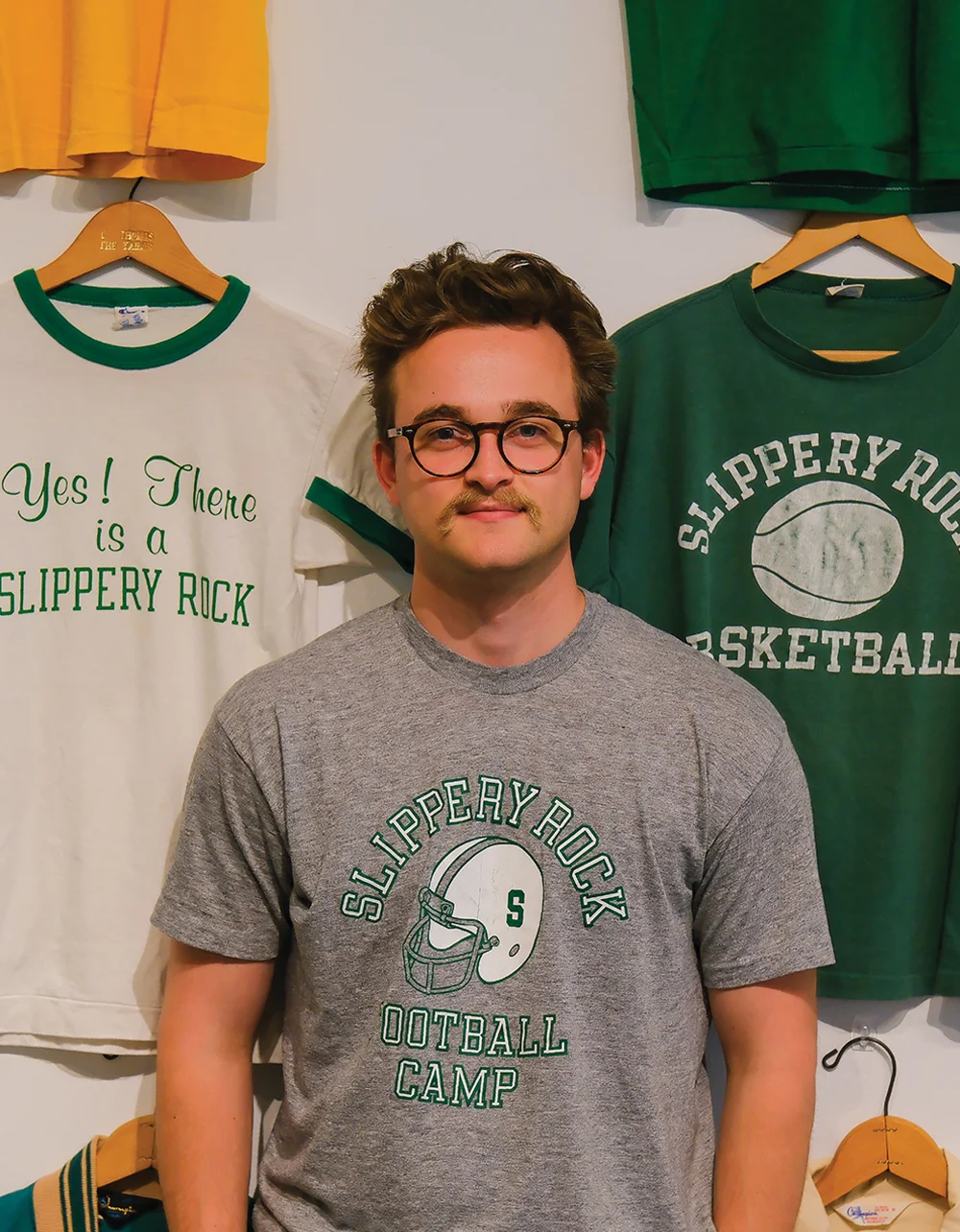

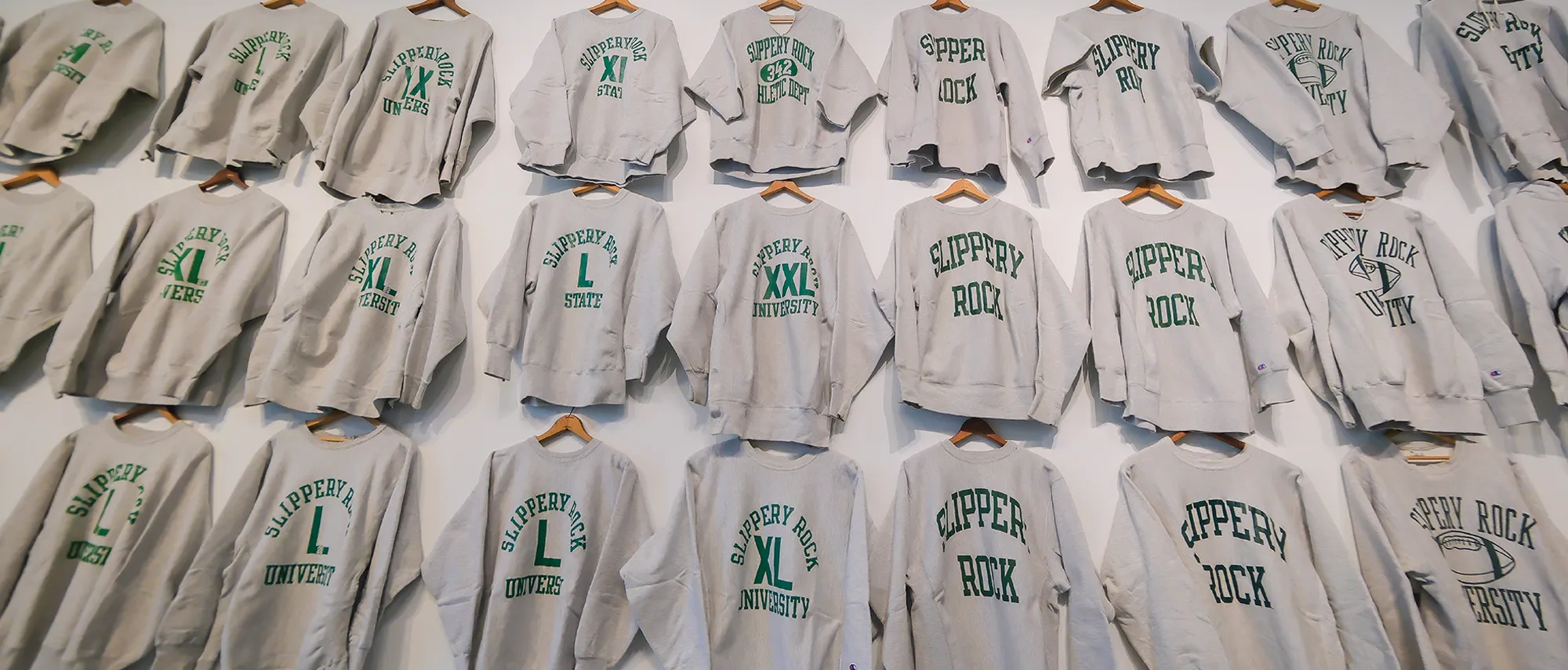


The Slippery Rock name also carries some cachet because it is so peculiar.
“Ever since the ’70s, people have been buying Slippery Rock stuff –– even people overseas –– purely because it’s a goofy name that stands out,” Fry said. “I’ve heard stories about people going on spring break in the ’80s and they took their Slippery Rock stuff to sell to the locals or trade for free beer or whatever you had to do back then. There’s just a really cool history through clothing.”
Fry said that most of his vintage SRU clothing has been sourced through other collectors, not thrift stores or other alumni. Like Perry, most alumni hold on to their SRU gear as keepsakes.
“If you try going to a thrift store or asking alumni, I wish you all the best,” Fry said. “Collecting these takes a lot of time, perseverance and patience to find the right opportunity.”
And money. Although he operates a small online business named “Frys Vintage,” Fry does not sell his SRU clothing. He’ll trade items or use money he makes from other sells to add to his Slippery Rock collection. Some of the cage gear can go for hundreds of dollars on the open market but he’ll often swap with other collectors.
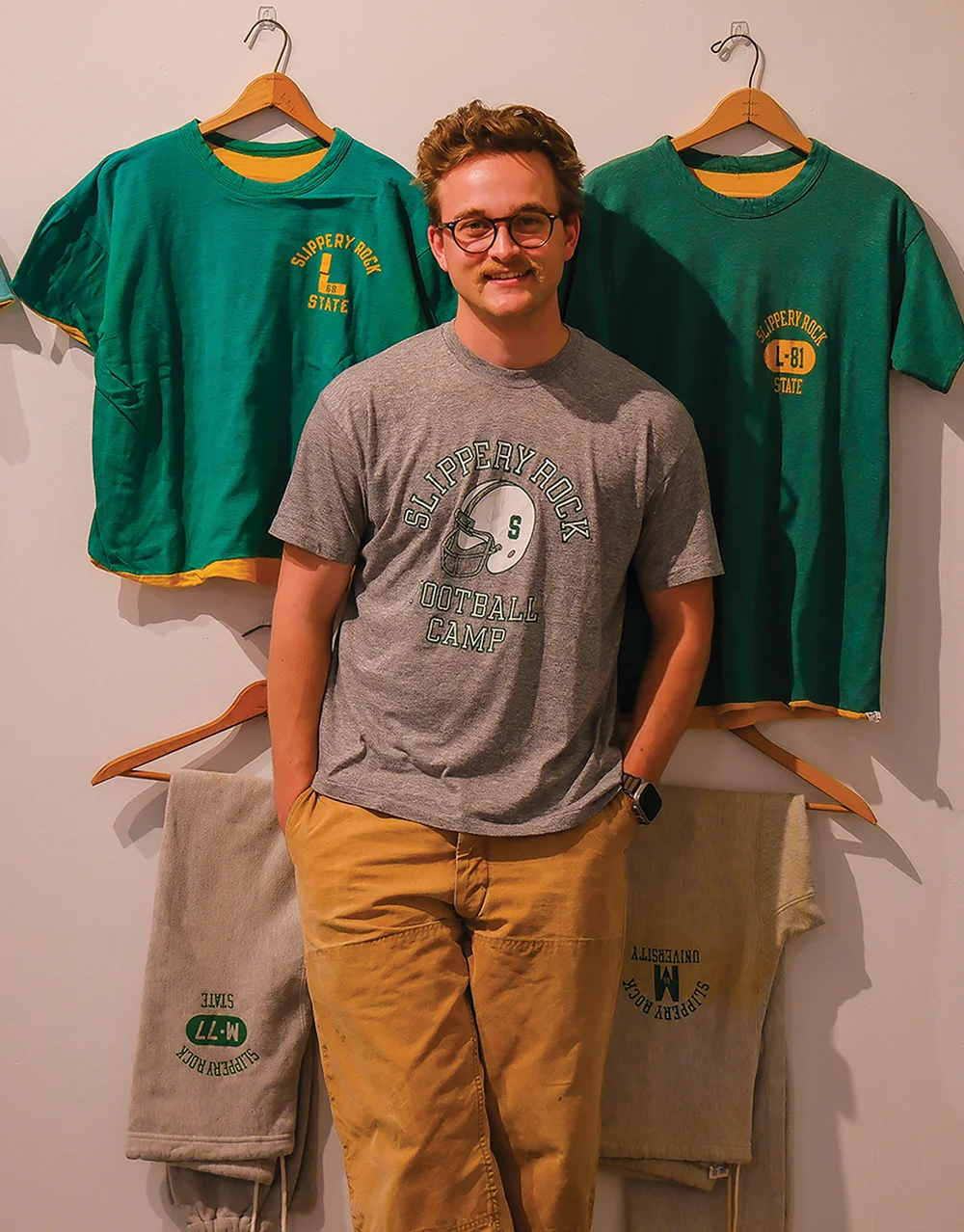
“I call it a ‘jobby;’ it’s a job and a hobby,” said Fry, whose day job is a client management associate for CAPTRUST financial advisers. “Some people will look at the stuff I have and think it’s gross or grimy and weird that I’m collecting someone else’s clothes. But people like old cars or old houses or antiques. It’s the same thing with clothes. Clothes are not made the same as they used to be.”
Fry appreciates the function over form when it comes to clothing, whether it’s a pair of carpenter’s pants with a pocket for holding a certain tool, or having the sizes and years on cage gear.
“There are a lot of stories to be told through clothing,” Fry said. “Most people don’t think about it. They think, it’s just a sweatshirt, but there’s a lot that goes into it, from how it was made or who wore it. If you wore something for a long time or while you were in college, that’s part of your identity.”
As a young alumnus who is collecting old clothing, Fry is the curator of a collection that quite literally serves as a common thread between people within the SRU community.
“Clothing is a cool way of capturing culture over time,” Fry said. “I’m preserving it to make sure it gets to the next generation.”

